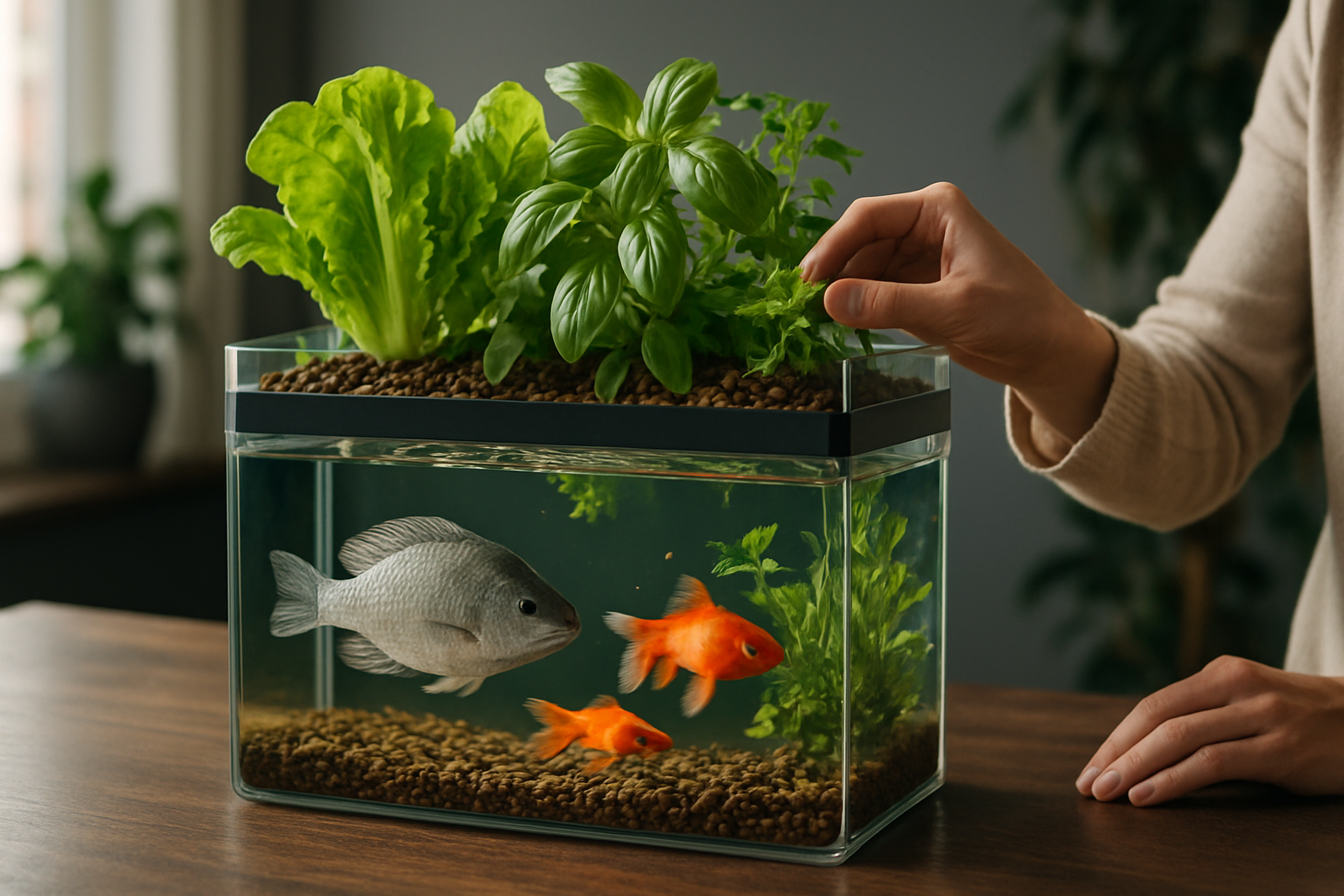Aquaponic Pet Care: A Sustainable Fusion of Fish and Flora
Imagine a world where your pet fish not only swim gracefully in their tank but also contribute to a thriving garden above. Welcome to the innovative realm of aquaponic pet care, where the symbiotic relationship between aquatic creatures and plants creates a self-sustaining ecosystem right in your home.

A Brief History of Aquaponics
The concept of aquaponics dates back to ancient civilizations. The Aztecs developed chinampas, or floating gardens, where they grew crops on lake surfaces using fish waste as fertilizer. In Southeast Asia, farmers have long practiced a form of aquaponics by cultivating rice in paddies alongside fish. However, it wasn’t until the mid-20th century that modern aquaponics began to take shape, with researchers exploring its potential for sustainable food production.
The Science Behind Aquaponic Pet Systems
At the heart of aquaponic pet care is a fascinating biological process. Fish produce ammonia-rich waste, which is toxic to them in high concentrations. Beneficial bacteria in the system convert this ammonia into nitrites and then into nitrates, which are essential nutrients for plant growth. As the plants absorb these nutrients, they simultaneously purify the water, creating a healthier environment for the fish.
Choosing the Right Fish for Your Aquaponic Setup
Not all fish are suitable for aquaponic systems. When selecting fish for your setup, consider species that are hardy, adaptable to various water conditions, and produce sufficient waste to support plant growth. Popular choices include:
-
Tilapia: Fast-growing and resilient, tilapia are excellent for beginners.
-
Goldfish: These classic pets are well-suited for smaller, decorative systems.
-
Koi: Beautiful and long-lived, koi can thrive in larger outdoor setups.
-
Catfish: Known for their hardiness, catfish are another great option for beginners.
Plant Selection for Aquaponic Pet Systems
The plants you choose for your aquaponic system play a crucial role in maintaining water quality and creating a visually appealing display. Some ideal plant options include:
-
Leafy greens: Lettuce, spinach, and kale thrive in aquaponic environments.
-
Herbs: Basil, mint, and parsley not only purify water but also provide fresh flavors for your kitchen.
-
Ornamental plants: Peace lilies, spider plants, and pothos can add beauty to your setup while effectively filtering the water.
Setting Up Your Aquaponic Pet System
Creating an aquaponic system for your pets requires careful planning and setup. Here’s a basic guide to get you started:
-
Choose a suitable tank: Select a tank that accommodates your chosen fish species comfortably.
-
Install a grow bed: This is where your plants will thrive, typically positioned above the fish tank.
-
Set up a pump: This circulates water between the fish tank and grow bed.
-
Add filter media: This provides a surface for beneficial bacteria to colonize.
-
Introduce fish and plants: Start with a small number of fish and gradually increase as the system stabilizes.
Maintaining Your Aquaponic Pet Ecosystem
Regular maintenance is crucial for a healthy aquaponic system. This includes:
-
Monitoring water quality: Regularly test pH, ammonia, nitrite, and nitrate levels.
-
Feeding fish appropriately: Overfeeding can lead to water quality issues.
-
Pruning plants: Remove dead leaves and harvest plants as needed.
-
Cleaning filters: Periodically clean or replace filter media to ensure optimal water flow.
The Benefits of Aquaponic Pet Care
Aquaponic pet care offers numerous advantages for both pet owners and their aquatic companions:
-
Reduced water usage: Aquaponic systems use significantly less water than traditional aquariums or gardens.
-
Natural filtration: Plants provide a chemical-free method of water purification.
-
Educational value: These systems offer a hands-on way to learn about ecosystems and sustainability.
-
Fresh produce: Enjoy homegrown herbs and vegetables from your pet’s habitat.
-
Aesthetic appeal: Combine the beauty of an aquarium with the lush growth of a garden.
Challenges and Considerations
While aquaponic pet care can be rewarding, it’s not without its challenges:
-
Initial setup costs: Quality equipment for a reliable system can be pricey, with costs ranging from $200 to $1000 or more, depending on size and complexity.
-
Learning curve: Understanding the balance between fish, plants, and bacteria requires patience and research.
-
Power dependency: Most systems rely on electric pumps, making backup power sources essential.
-
Space requirements: Larger systems may require significant space in your home or yard.
The Future of Aquaponic Pet Care
As sustainability becomes increasingly important, aquaponic pet care is poised for growth. Innovations in compact, designer systems are making this eco-friendly approach more accessible to urban dwellers and apartment residents. Moreover, the integration of smart technology and automation is simplifying maintenance and monitoring, potentially broadening the appeal of aquaponic pet care to a wider audience.
In conclusion, aquaponic pet care represents a fascinating intersection of pet ownership, gardening, and sustainable living. By creating a miniature ecosystem in your home, you not only provide a unique environment for your aquatic pets but also contribute to a more sustainable future. As this innovative approach to pet care continues to evolve, it offers an exciting opportunity for pet lovers to explore the wonders of nature’s interconnectedness right in their own living rooms.





